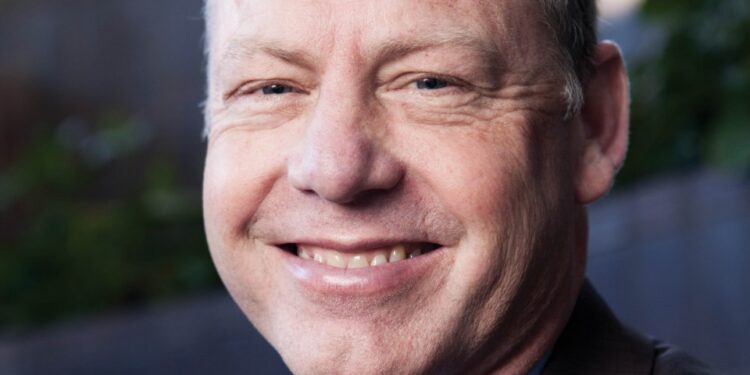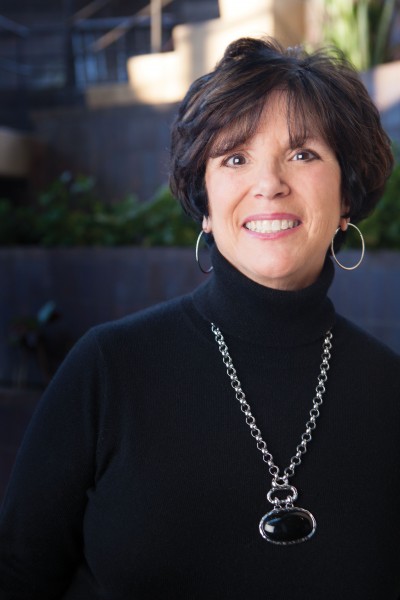Diabetes has long been thought of as a single disease only suffered by the overweight, the unhealthy, the elderly, or those with family members who have had diabetes. And while that might be true of some people with the more common type 2 diabetes, it’s not the case with type 1 diabetes (T1D).
“Type 2 diabetes is very different from T1D, as it is considered preventable and treatable,” says Brevard Fraser, Executive Director of the JDRF Heartland Chapter, which includes both the Omaha and Council Bluffs areas. As it stands today, there are no biological cures for T1D, which is an autoimmune disease in which the pancreas stops producing insulin, a hormone that enables people to get energy from food. It can occur at any age, and the exact cause is unknown.
Since its founding in 1970, JDRF has been behind T1D research funding, working to improve the lives of all people affected by accelerating progress on the search for a cure, better treatments, and ways to prevent T1D. Today, JDRF is the leading global organization focused on T1D research and has contributed more than $1.6 billion to finding a cure.
“Incidences of T1D are on the rise, and JDRF is the first stop of support for those just diagnosed,” Fraser explains. “We can provide education, mentors, outreach, and the opportunity to be a part of finding a cure, and so much more for those affected by T1D.”
Despite what many people think, Fraser and those affiliated with JDRF know that T1D is a very complicated disease. “From those who are diagnosed at 9 months to those living with T1D for over 40 years…The daily regimen [they] have to live with every day of their lives—it blew my mind away!”
One person who would agree with Fraser is Omahan Daron Smith, who was diagnosed with T1D in 1970—coincidentally, the same year JDRF was founded.
According to Smith, T1D is best understood by the illustration of an old teeter-totter. But instead of being a regular teeter-totter, this teeter-totter is held up by a pencil and has three wooden planks joining in the center. One of the planks represents food intake. Another represents insulin intake. The last represents the exercise, emotions, and stress in life. “I am attempting to keep a perfect balance of my blood sugar levels with all three of these [planks] hitting me at once, all day every day,” says Smith
Smith grew up in the Omaha area. After spending some time at the University of Nebraska-Lincoln, he began his career at a young age, working for Better Business Equipment, a company started by his father, Coyner Smith, in 1968. When his father retired from the company in 2000, Smith took over as President.r
“The funding raised by JDRF is making huge strides for the individuals who deal with this disease…There is significant progress toward a cure and much better treatment.” - Daron Smith
rDespite his demanding career and raising 11-year-old son Joshua, Smith has a more overwhelming issue that constantly needs his attention—the injection of insulin into his body on a daily and sometimes hourly basis. A healthy pancreas will keep the body’s blood sugar level at about 80-100 all day regardless of activity, food intake, or stress. But for a person with T1D, like Smith, the levels must be managed in order to live. “My goal is to keep my blood sugar levels between 80 and 160. When my blood sugar levels get below 60, it causes major problems; and when it gets above 150, it will cause long-term, significant health issues, many of which are life-threatening.
“I decided a long time ago that I have to look at life with diabetes with a glass-half-full attitude.” Fortunately, Smith hasn’t had to rely solely on positivity to get him through the struggle.
“With the funding that has been raised for diabetes research through JDRF, tools like the insulin pump and the Continuous Glucose Monitor (CGM) would not have happened…Before I switched my insulin delivery to an insulin pump, I would deliver the insulin through the use of syringes. I’ve estimated that, in my lifetime, I have taken over 25,000 insulin injections.” JDRF’s research is why Smith now uses some fairly sophisticated technology to stay on top of his diabetes. “I use an insulin pump to deliver my insulin, and I also use a CGM to monitor my blood sugar level, as well as a glucometer to verify my blood sugar levels.”
Smith is also blessed to be on the Heartland Chapter’s board of directors. Through that connection, he says that he has become aware of how close we are to finding more significant, life-altering technology for those with T1D. “The funding raised by JDRF is making huge strides for the individuals who deal with this disease…There is significant progress toward a cure and much better treatment.”
Although JDRF is growing nearer to a cure for T1D each year, Smith hopes it comes soon, as it saddens him to think about the parents who have to help their children take thousands of insulin shots and prick their fingers six to 10 times a day for their entire life.
Cindy Irvine, who has volunteered with the Heartland Chapter for the last 10 years and is a former president of the board, says she is fortunate to have not been one of those parents. Her younger son, Tyler, was diagnosed with T1D at 14, which initially gave her the desire to work with the organization.
“We were actually very blessed because he was older when he was diagnosed,” she says. “We had a lot of support in the medical community, as well as in our social community. He was pretty much able to give himself his own shots, and he knew he had to test his blood sugar.” Although her son was well adjusted to the management of his T1D, it doesn’t mean Irvine wasn’t occasionally at his school reminding teachers or coaches of his diabetic needs.r
“JDRF, especially the Heartland Chapter, is doing such a great job educating people about what T1D is through their outreach programs and events.” - Cindy Irvine
rToday, her son is 24 and has kept himself quite busy. “He just spent a year in Thailand, he spent a semester abroad in Mexico, he went to the Dominican Republic through a Creighton University program, and he’s now studying to get his master’s degree in public health.” While her son has traveled, Irvine has been constantly working with him to make sure he is managing his diabetes properly. “I don’t think people understand. When you go abroad, the supplies you have to take are massive. We sent six months of insulin with him when he went to Thailand, and then my husband and I flew over for the next six months. [Tyler] carries around a lot of stuff. He started carrying a ‘murse,’ which he said stands for ‘man purse,’” she adds with a laugh.
Irvine believes that the Heartland Chapter has done so much to provide help for children with diabetes and their parents. “There are so many resources that you really can’t get anywhere else—information on how to fill out the forms for school to make sure they’re getting the right care or how to prepare a child to go to college, and there are great programs to help parents and kids go through the transition after the diagnosis.
“I think there’s a lot of preconceived ideas about what diabetes is,” adds Irvine. “JDRF, especially the Heartland Chapter, is doing such a great job educating people about what T1D is through their outreach programs and events.”
As the chapter grows, greater emphasis is being placed on outreach efforts. The Bag of Hope is an education and outreach program available through the chapter that is designed to reach young children and teenagers with diabetes and their families at the time of diagnosis. The Bag of Hope contains a comprehensive collection of educational and comforting materials for the entire family. The chapter’s long-range plans include the establishment of support groups covering topics from initial diagnosis to adolescence issues and beyond.
Each year, the Heartland Chapter also holds two annual fundraising events: Walk to Cure Diabetes and the Promise Gala. This year’s Walk to Cure Diabetes in August raised more than $750,000 for diabetes research and included not only the traditional walk but also a T1D 5K Dash. Like the Walk to Cure Diabetes, the Promise Gala is another large fundraising effort during the year. “Funds raised during the Fund a Cure portion of the evening go directly to research—not overhead or events costs or anything else,” explains Fraser. “We also educate those new to JDRF through video presentations on cutting-edge research, as well as the very personal stories of children, adults, and families living with the burden of T1D.”
The 16th Annual JDRF Promise Gala will be hosted at CenturyLink Center Omaha on February 23. The theme of the evening is “Hit T1D Out of the Park – We’re Bringing Home a Cure!” The event will start at 6pm with cocktails and a silent auction, followed by dinner and a special program. Dress code for the event is cocktail attire (black-tie optional).
For more information about the JDRF Heartland Chapter or to reserve tickets for this year’s Promise Gala, visit jdrf.org/omaha or call 402-397-2873.












